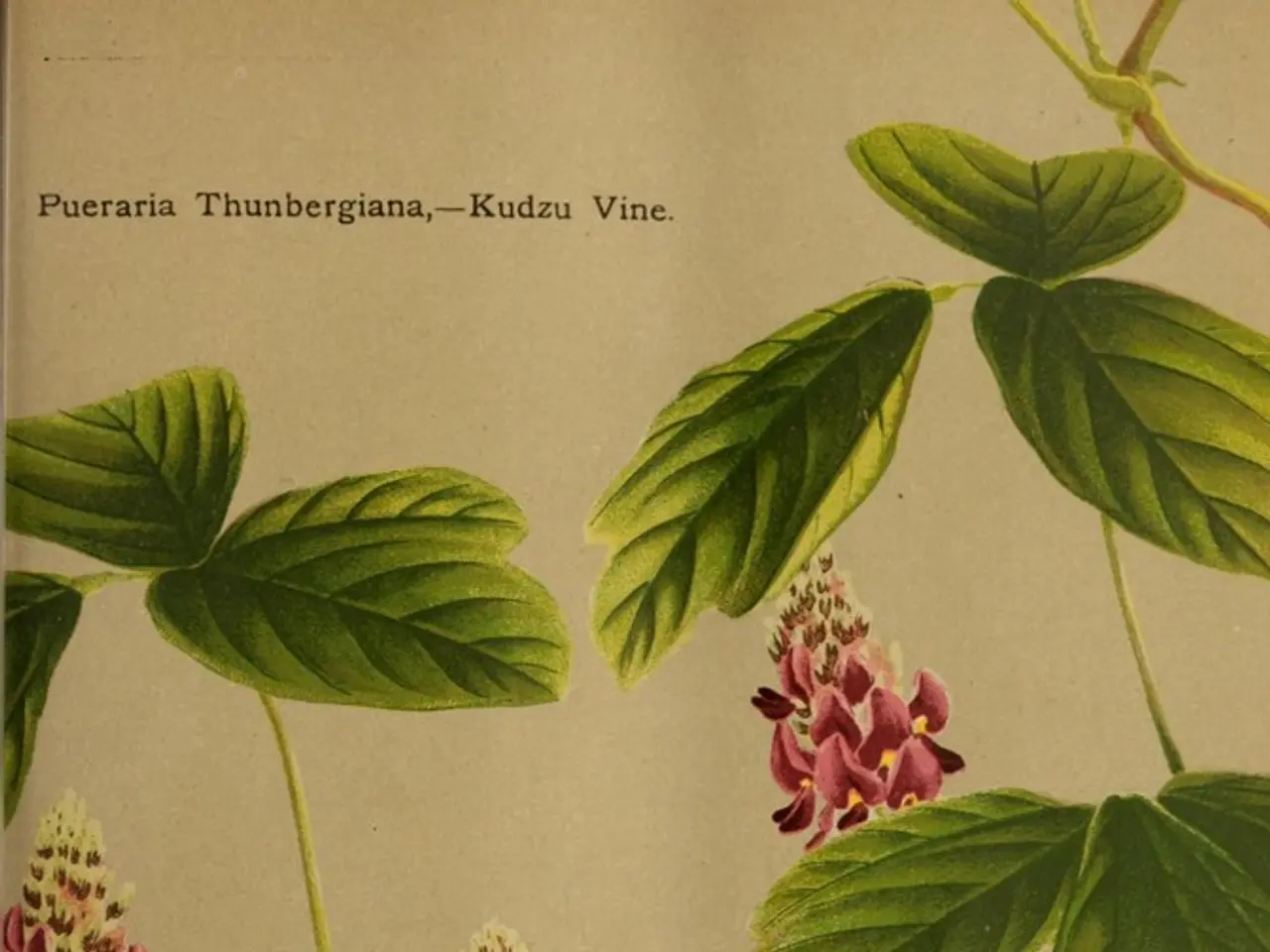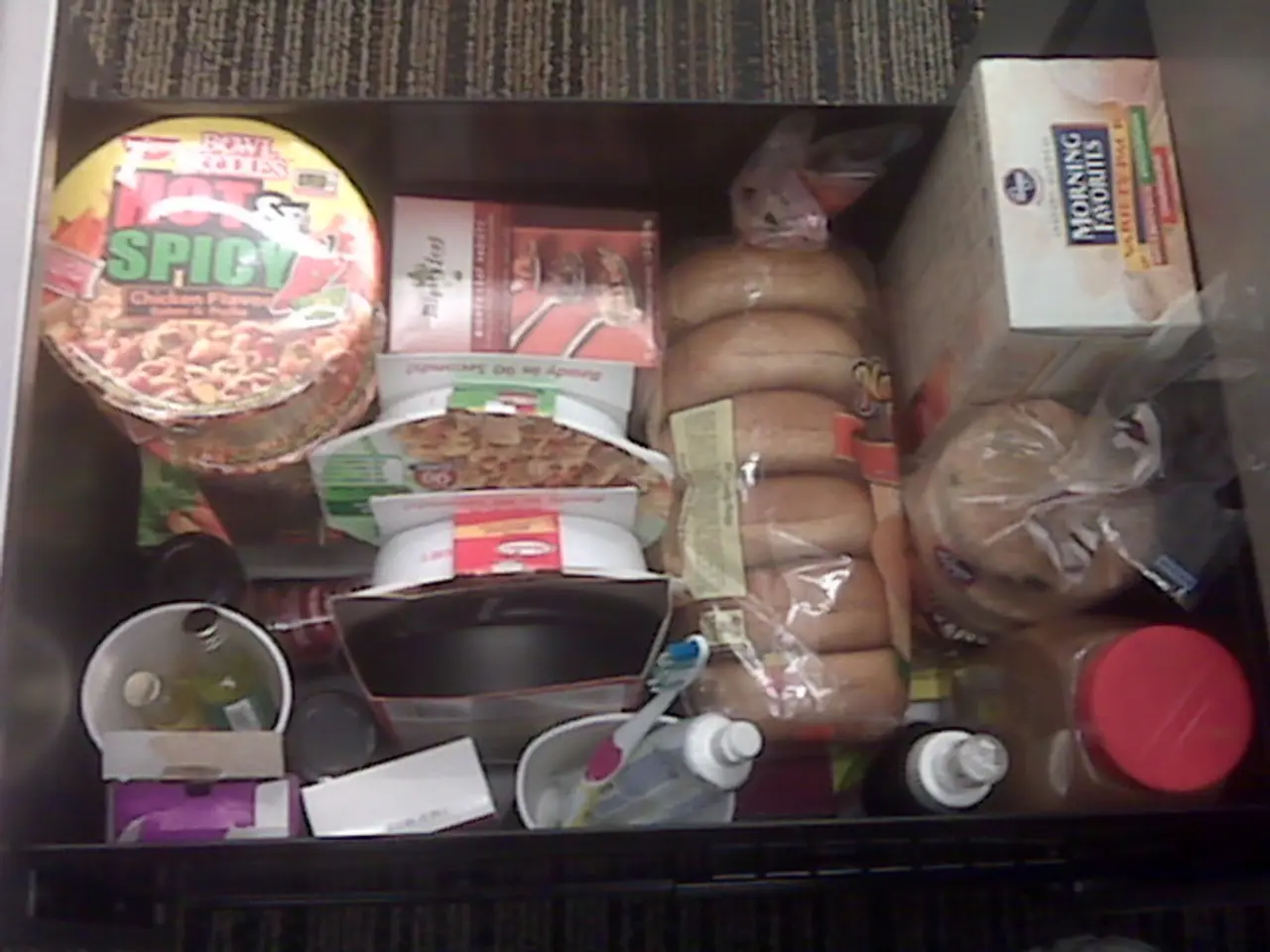Twenty Flower Species that Sow Themselves After Planting, Providing Continuous Blooms for Extended Periods
In the vibrant world of gardening, self-seeding flowers can bring a touch of natural magic to your outdoor space. These flowers, known for their ability to propagate themselves, can provide a continuous display of colour and life in your garden. However, it's essential to be mindful of self-seeding flowers that may become invasive, potentially causing harm to native ecosystems.
One such invasive flower to be aware of is the Common Foxglove (Digitalis purpurea). Despite its beautiful showy tubular flowers, it can be invasive in certain areas, driving out native plants and posing a poisoning risk to pets due to its toxicity.
Another invasive self-seeder is Lily-of-the-Valley (Convallaria majalis). This plant forms thick colonies that can displace other plants and is also poisonous, making it unsafe for gardens where pets or children might be present.
Japanese Honeysuckle (Lonicera japonica), known for its fragrant yellow flowers, is highly invasive, particularly in the Midwest, where it can outcompete native species by climbing and smothering them.
Golden Marguerite (Anthemis tinctoria) and Garden Lupine (Lupinus) are two other self-seeding flowers that require careful consideration. While not typically invasive, Golden Marguerite requires vigorous deadheading to prevent spreading, which might offset the benefits of self-seeding. Some lupine species can become invasive, spreading quickly and potentially displacing native vegetation.
Before planting any self-seeding flowers, it's important to check local regulations and consider the potential impact on native ecosystems to avoid introducing invasive species. Always ensure that the plants you choose are well-suited to your local environment and won't become problematic over time.
On the brighter side, there are numerous self-seeding flowers that are not invasive and can add charm and beauty to your garden. Forget-Me-Nots (Myosotis), for instance, are low-growing plants with clusters of tiny, sky-blue flowers, flourishing in shady or damp areas.
Columbine (Aquilegia) is another delightful addition, with uniquely shaped blooms in shades of blue, purple, pink, and white. Verbena (Verbena bonariensis) produces clusters of tiny lavender or purple blooms and attracts pollinators like butterflies and bees.
Poppies (Papaver) and Shirley Poppies, with their tissue-paper-like petals and iconic black centers, add bold colour in shades of red, orange, pink, and white. Love-In-A-Mist (Nigella damascena) offers unique, star-shaped flowers, and Nigella Hispanica, a cousin of Love-In-A-Mist, offers striking dark seeds and intricate blooms.
Snapdragons (Antirrhinum), Sweet Alyssum (Lobularia maritima), and Sweet William (Dianthus barbatus) are other charming self-seeding flowers, each offering a unique charm with their colourful blooms and sweet fragrance.
Lastly, Echinacea (Echinacea purpurea) is a hardy perennial with daisy-like petals and cone-shaped centers. It provides long-lasting blooms, is highly drought-tolerant, and reseeds easily while remaining non-invasive. Sunflowers (Helianthus annuus) add warmth and cheer with their iconic yellow blooms and attract birds, pollinators, and beneficial insects. They self-seed prolifically, particularly with non-hybrid options.
Hollyhocks (Alcea) are tall, stately flowers that add height and old-fashioned charm to any garden and reseed abundantly for years of blooms. Cypress Vine (Ipomoea quamoclit) is a fast-growing annual that can quickly cover trellises and fences with its lush green foliage and attracts hummingbirds and butterflies.
With careful planning and consideration, self-seeding flowers can be a wonderful addition to your garden, providing a continuous display of colour and life while coexisting harmoniously with native ecosystems. Happy gardening!
- In the world of gardening, self-seeding flowers like Forget-Me-Nots (Myosotis) and Columbine (Aquilegia) can add charm and beauty to your outdoor space, offering a continuous display of distinctive blooms.
- While Japanese Honeysuckle (Lonicera japonica) and Lily-of-the-Valley (Convallaria majalis) are beautiful self-seeding flowers, they can be invasive or require careful management, so it's vital to check their impact on native ecosystems.
- Gardeners must also be mindful of Common Foxglove (Digitalis purpurea) and Garden Lupine (Lupinus), as some species can become invasive, while Golden Marguerite (Anthemis tinctoria) needs vigorous deadheading to prevent spreading.
- Echinacea (Echinacea purpurea) and Sunflowers (Helianthus annuus) are self-seeding flowers that provide long-lasting blooms, are drought-tolerant, and remain non-invasive, making them great choices for home-and-garden environments.
- Before planting any self-seeding flowers, it's important to consider their potential impact on local ecosystems and ensure the plants are well-suited to your home-and-garden lifestyle, as some may become invasive or problematic over time.
- Cypress Vine (Ipomoea quamoclit), a fast-growing annual, can bring life to garden trellises and fences with its lush foliage while attracting hummingbirds and butterflies, making it a valuable addition to a balanced home-and-garden lifestyle.




